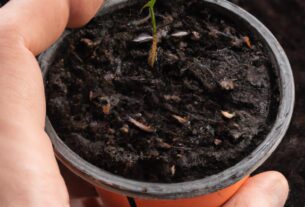Gardening is a beloved hobby that is cherished by people all around the world, and at the heart of this hobby lies the garden plant market. This market encompasses the sale of plants, seeds, and gardening supplies for homes, commercial spaces, and public areas. According to a report by ResearchAndMarkets, the global garden market size is expected to reach an impressive $37.9 billion by 2027, with a steady growth rate of 4.6% between 2020 and 2027.
A Historical Perspective
The roots of the garden plant market can be traced back to ancient times when the Egyptians cultivated plants for their aesthetic appeal. The Greeks and Romans later introduced the concept of botanical gardens, which captured the imagination of the elite class. The 18th century witnessed the rise of horticultural societies, leading to the widespread popularity of gardening as a hobby and the subsequent growth of the garden plant market.
Current Trends Shaping the Market
The garden plant market is a dynamic and ever-evolving industry, fueled by changing consumer preferences and technological advancements. One notable trend is the increasing demand for sustainable and eco-friendly gardening practices. A survey by the National Gardening Association revealed that 35% of households in the US now grow their own food either in a community garden or at home, reflecting a shift towards sustainable living.
Another trend that has gained traction in recent years is indoor gardening. This practice has captured the hearts of many due to its numerous benefits, such as improved air quality and reduced stress levels. Furthermore, the availability of smart gardening tools and applications has made it easier than ever for people to nurture plants indoors.
Market Size and Growth Factors
The garden plant market is vast and encompasses various segments, including ornamental plants, vegetables, fruits, herbs, and landscaping. The market size and growth are influenced by a multitude of factors such as economic conditions, consumer preferences, and the impacts of climate change. The same report by ResearchAndMarkets highlights that the ornamental plants segment accounted for the largest market share in 2019, a trend that is expected to continue in the coming years. Furthermore, the Asia Pacific region is projected to experience the highest growth rate due to increasing urbanization and the rising disposable income of the middle class.
In conclusion, the garden plant market is a thriving industry that continues to grow and evolve. Changing consumer preferences and technological advancements play crucial roles in shaping the future of this market. Now, let’s delve deeper into the factors that affect the garden plant market and explore the types of garden plants that are in high demand.
Factors Impacting the Garden Plant Market
The garden plant market is greatly affected by both internal and external factors that significantly influence its growth and profitability. One of the most pressing challenges for the industry is climate change. The rapidly changing weather patterns have resulted in adverse effects on plant growth and survival, leading to decreased crop yields and quality. Extreme weather events like droughts, floods, and heatwaves have also caused substantial damage to plants, resulting in losses for farmers and gardeners alike.
In addition, climate change has contributed to the spread of pests and diseases that pose a threat to plant health. To mitigate the effects of climate change, gardeners and farmers are adopting sustainable farming practices such as crop rotation, intercropping, and the use of organic fertilizers.
Another key factor influencing the garden plant market is consumer preferences. As per a survey conducted by the National Gardening Association, the most popular plants in the US are tomatoes, herbs, and cucumbers, indicating a growing interest in homegrown produce. Consumers are also increasingly drawn to plants that require less water and maintenance, such as succulents and cacti. Moreover, there is a growing awareness of the environmental impact of gardening practices, leading to the adoption of sustainable techniques. Rainwater harvesting, composting, and natural pest control methods are some examples of eco-friendly practices adopted by gardeners to reduce their carbon footprint.
Types of Garden Plants in High Demand
The garden plant market offers a wide array of plants to cater to the diverse needs and preferences of consumers. Some of the popular types of plants include:
Annuals and Perennials
Annuals and perennials are two of the most sought-after types of ornamental plants in the garden plant market. Annuals complete their life cycle within a year and need to be replanted each season, while perennials live for multiple years and require less maintenance. Popular annuals include petunias, marigolds, and zinnias, while perennials encompass roses, lavender, and daisies.
Trees and Shrubs
Trees and shrubs are highly valued in the garden plant market for their aesthetic appeal and functional benefits such as providing shade, privacy, and windbreaks. This category includes both flowering and non-flowering plants, such as magnolias, maples, and junipers.
Vegetables and Herbs
The demand for homegrown vegetables and herbs has been steadily increasing in the garden plant market, fueled by the growing emphasis on healthy living and sustainability. Popular vegetables include tomatoes, peppers, and lettuce, while herbs such as basil, mint, and oregano are widely used in cooking and for medicinal purposes.
In summary, the garden plant market is a thriving industry that offers a wide range of plants to cater to the diverse preferences of consumers. Now, let’s take a closer look at the key players in this market.
Key Players in the Garden Plant Market
The garden plant market is a highly competitive industry with several key players catering to the diverse needs of customers. Some of the major players in the market include:
Retailers
Retailers serve as the primary channel for the sale of garden plants, seeds, and supplies. They cater to both individual customers and commercial clients such as landscapers and garden designers. Retailers can be standalone stores or part of larger chains, offering a wide range of products, including ornamental plants, vegetables, and landscaping supplies.
Wholesalers
Wholesalers play a pivotal role as intermediaries between growers and retailers. They buy plants in bulk from growers and offer them to retailers at discounted prices. Wholesalers usually operate on a regional or national scale, providing an extensive range of products, from plants and seeds to gardening supplies.
Online Sellers
In recent years, online sellers have emerged as significant players in the garden plant market. Offering convenience and cost-effectiveness, they provide customers with the advantage of home delivery. Online sellers cater to customers worldwide and boast an extensive selection of plants, including exotic and rare varieties.
The Future of the Garden Plant Market
The garden plant market is poised for substantial growth in the years to come. This growth will be propelled by various factors, including technological advancements, evolving consumer preferences, and the rise of sustainable gardening practices. Let’s explore the emerging trends, opportunities, and challenges that lie ahead.
Emerging Trends
One promising trend in the garden plant market is the utilization of technology to enhance plant growth and development. Smart gardening tools, such as soil sensors, automated watering systems, and plant health monitoring devices, are gaining popularity among gardeners. These tools optimize plant growth, reduce water consumption, and promote sustainable gardening practices.
Another exciting trend is the use of biodegradable and compostable materials for packaging and plant containers. These environmentally friendly alternatives help reduce waste and pollution.
Opportunities and Challenges
The garden plant market presents numerous opportunities for growth and expansion, especially in emerging markets like Asia and Africa. The increasing urbanization and rising disposable income of the middle class in these regions have sparked a demand for ornamental plants and landscaping services.
However, the garden plant market also faces significant challenges, including climate change, pests and diseases, and a shortage of skilled labor. These challenges call for innovative solutions such as developing drought-resistant plant varieties, employing natural pest control methods, and enhancing the skills of workers in the horticulture industry.
Forecast for the Future
The future of the garden plant market looks promising, with steady growth anticipated in the years ahead. The increasing demand for sustainable and eco-friendly gardening practices, coupled with technological advancements, will drive growth in the market.
Furthermore, the market is expected to witness significant consolidation, with the emergence of large players leveraging economies of scale to offer competitive prices and an extensive range of products. The TooLacks team eagerly anticipates the future developments in the garden plant market and the opportunities for growth and innovation that lie ahead.


